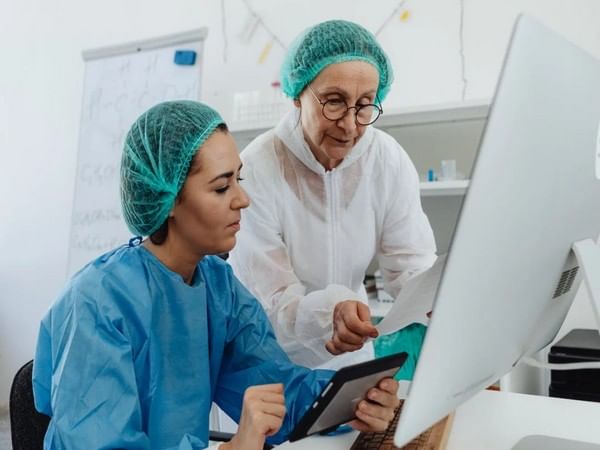Washington [US], May 2 (ANI): The lungs’ blood arteries differ from those of the rest of the body. This distinction is obvious in pulmonary hypertension, in which only the lungs’ blood arteries harden gradually, resulting in chronic lung disease, heart failure, and death.
The fundamental causes of this organ-specific channel stiffening remained unknown until University of Pittsburgh researcher Stephen Chan and colleagues uncovered an unexpected revelation regarding these blood vessel cells in pulmonary hypertension patients: they’re hungry.
Chan, Vitalant Chair in Vascular Medicine and Professor of Medicine in the Division of Cardiology at the University of Pittsburgh, and his colleagues worked with Thomas Bertero’s team at the Universite Cote d’Azur in France. They discovered that hypertensive pulmonary blood vessel cells have an insatiable desire for two amino acids.
The findings were published in the journal Cell Metabolism.
Amino acids are the building blocks of proteins, which help build cellular structures, carry out biological functions, and regulate tissue and organ function. As hypertensive pulmonary blood vessels metabolize glutamine and serine, they create two new amino acids, called proline and glycine. Proline and glycine are the primary building blocks of collagen protein, which makes up 30 per cent of our body’s total protein and provides a structural framework for our skin, muscles, bones and connective tissues. The appetite for glutamine and serine and the resulting elevated levels of proline and glycine in hypertensive pulmonary blood vessel cells drive the overproduction of collagen, which leads to vessel stiffening and impaired function–the hallmark feature of pulmonary hypertension.
Using rodent models for the disease, the researchers saw that drugs that limit cellular uptake of glutamine and serine deprived hypertensive pulmonary blood vessels of their craving. In turn, the lack of cellular glutamine and serine metabolism halted the excess production of collagen building blocks and collagen production. Knowing amino acids are most often absorbed through our diets, the team also discovered that reducing the dietary intake of glutamine- and serine-rich foods helped reduce collagen overproduction.
“For the first time, we have a dietary maneuver that may serve as an effective therapy for the disease,” said Chan, who also directs the Vascular Medicine Institute and Center for Pulmonary Vascular Biology and Medicine at the University of Pittsburgh School of Medicine and UPMC.
For patients with pulmonary hypertension, avoiding foods rich in serine and glutamine, or eating foods with these amino acids depleted, might bolster the effectiveness of current medications. “It opens up a new way that we could treat this disease, because now–instead of just relying on medications and transplantation–there are possibly effective lifestyle interventions,” said Chan. (ANI)
This report is auto-generated from ANI news service. ThePrint holds no responsibility for its content.



